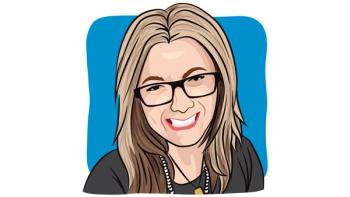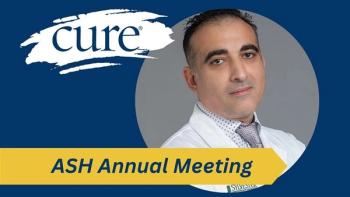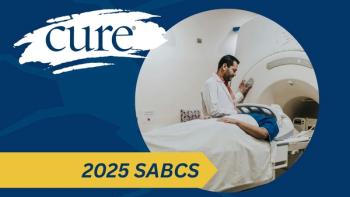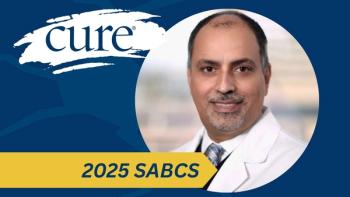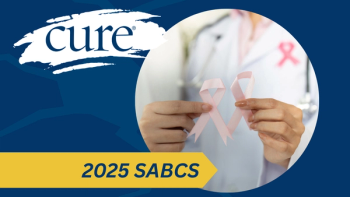Tecartus (brexucabtagene autoleucel) produced similar treatment outcomes in patients aged 60 to 69 with relapsed or refractory B-cell acute lymphoblastic leukemia (B-ALL) compared to patients of other ages, according to findings from a real-world study presented at the 2024 ASH Annual Meeting.
Patients who were less than 60 years of age (220 patients) achieved a complete remission (CR)/CR with incomplete count recovery (CRi) rate of 89%, including a minimal residual disease (MRD)-negativity rate of 74%. Patients who were 60 to 69 years of age (57 patients) also experienced a CR/CRi rate of 89%, with an MRD-negativity rate of 59%. These respective rates were 94% and 67% among patients who were 70 years of age or older (19 patients).
“The rates of CR were similar across the groups at approximately 90% and no statistically significant difference was detected between the groups,” Dr. Ibrahim Muhsen of Baylor College of Medicine in Houston, Texas, said during the presentation. “MRD-negativity rates were numerically lower among patients aged 60 to 69 compared with other groups.”
Moreover, there were no significant differences in overall survival (OS) between the less than 60, 60 to 69 and 70-plus years age groups. The respective median OS values were 695 days, not yet reached and 673 days. The six-month OS rates were 81%, 81% and 73%, respectively, and the 12-month OS rates were 68%, 63% and 61%, respectively.
Glossary:
Complete remission (CR): complete disappearance of cancer.
Incomplete count recovery (CRI): blood counts have not fully returned to normal after treatment.
Minimal residual disease (MRD): small amount of cancer cells remaining after treatment.
MRD negativity: no detectable cancer cells remaining after treatment.
MRD positivity: detectable cancer cells remaining after treatment.
Overall survival (OS): length of time a patient lives after being diagnosed with cancer.
Progression-free survival (PFS): length of time a patient lives without disease worsening.
Intravenous: through the vein.
ECOG performance status of 0, 1, 2 or more: a scale used to measure a person's functional ability and how well they can perform daily activities.
There was also no difference in progression-free survival (PFS) by age and the median PFS values in the less than 60, 60 to 69 and 70-plus years age groups were 397 days, 393 days and 259 days. The six-month PFS rates were 64%, 58% and 56%, respectively, and the 12-month PFS rates were 51%, 52% and 38%.
“It should be noted that the 12-months PFS [rate] and median PFS were lower in patients aged 70 and above. However, the number of patients in that group was small, which makes it very hard to draw any conclusions. Although we can see a plateau towards the end, a longer follow-up period is needed to better estimate how many patients are cured by this approach,” Muhsen commented.
Details of the Real-World Study
In October 2021, Tecartus was the first CAR T-cell therapy approved by the FDA for the treatment of adult patients with relapsed or refractory B-cell precursor ALL; the regulatory decision was supported by findings from the phase 1/2 ZUMA-3 trial. Among the 55 patients enrolled in the study, only eight were at least 65 years old and all of these patients achieved a CR/CRi.
“Although multiple studies have demonstrated the safety and efficacy of CAR T-cell therapies in older patients with lymphoma, data on the efficacy and safety of [Tecartus] in older patients with ALL remain very limited,” Muhsen noted.
To conduct their study, investigators identified adult patients with B-ALL who received Tecartus from October 2021 to June 2024 across 40 US-based academic and community institutions using the Real-World Outcomes Collaborative of CAR-T in Adult ALL (ROCCA) consortium database. The dataset included 318 patients who underwent apheresis to receive Tecartus, 22 of whom were not infused and thus not included in the analysis.
At baseline, the median age in the under 60 group was 36 years. Sixty-two percent of patients were male, and patients were non-Hispanic White (44%), Hispanic (39%), or Black (7%). Patients had an ECOG performance status of 0 (27%), 1 (52%) or 2 or more (12%). ALL subtypes were comprised of Philadelphia chromosome (Ph)-negative (47%), Ph-positive (29%), or Ph-like (22%) disease. The median follow-up was 309 days. Patients received a median of four prior lines of therapy, including Blincyto (blinatumomab; 57%), Besponsa (inotuzumab; 45%) and/or allogeneic hematopoietic cell transplantation (HCT; 42%). Patients received bridging therapy with chemotherapy (42%), immunotherapy (17%) or targeted therapy (14%), and most (51%) had active disease pre-apheresis whereas 28% had an MRD-positive CR and 12% had an MRD-negative CR.
In the 60 to 69 aged group, the median age was 64 years and 54% of patients were male. The group included patients who were non-Hispanic White (67%), Hispanic (18%), or Black (9%). Patients had an ECOG performance status of 0 (12%), 1 (68%) or 2 or more (11%). ALL subtypes included Ph-negative (53%), Ph-positive (37%), or Ph-like (11%) disease. The median follow-up time was 296 days. Patients received a median of three prior lines of therapy, including Blincyto (60%), Besponsa (44%), and/or allogeneic HCT (46%) and received bridging therapy with chemotherapy (32%), immunotherapy (18%) or targeted therapy (23%). Forty-six percent of patients had active disease, 25% had an MRD-positive CR and 24% had an MRD-negative CR pre-apheresis.
Furthermore, patients in the 70-plus group were a median age of 73 years and most patients were male (53%). The group included patients who were non-Hispanic White (74%), Hispanic (21%) or Black (5%). Patients had an ECOG performance status of 0 (11%), 1 (53%) or 2 or more (32%). ALL subtypes included Ph-negative (63%), Ph-positive (26%) or Ph-like (11%) disease. The median follow-up time was 395 days. Patients received a median of three prior lines of therapy, including Blincyto (68%), Besponsa (26%) and/or allogeneic HCT (16%), and received bridging therapy with chemotherapy (42%), immunotherapy (26%) or targeted therapy (11%). Forty-two percent of patients had active disease, 42% had an MRD-positive CR and 11% had an MRD-negative CR pre-apheresis.
Safety Findings Are Largely Consistent Across Age Groups
Patients in the under 60, 60 to 69 and 70-plus age groups experienced any-grade cytokine release syndrome (CRS) at respective rates of 84%, 86% and 89%. Grade 3 (severe) to 4 (life-threatening) CRS occurred at rates of 11%, 4% and 11%, respectively. Any-grade immune effector cell-associated neurotoxicity syndrome (ICANS) was reported in 48%, 56% and 79% of patients, respectively, and grade 3 to 4 ICANS occurred in 29%, 30% and 32% of patients, respectively.
In terms of hematotoxicity, the median time to absolute neutrophil (white blood cell) count recovery was 16 days, 15 days and 15 days in the under 60, 60 to 69 and 70-plus years old groups. The respective median times to platelet recovery were 27 days, 31 days and 51 days. Patients in all three groups required intravenous immunoglobulin infusion within 90 days (28% versus 18% versus 17%), granulocyte colony-stimulating factor (GCSF) use within 30 days (43% versus 33% versus 33%), GCSF use within 30 to 90 days (37% versus 30% versus 33%), thrombopoietin mimetics use on days 30 to 90 (6% versus 6% versus 6%) and red blood cell transfusion from days 30 to 90 (14% versus 22% versus 6%). Eighteen percent of patients in the under 60 group and 26% in the age 60 to 69 group required platelet transfusion from days 30 to 90. Patients in each group also experienced at least one any-grade infection (30% versus 30% versus 26%) and at least one grade 3 or higher infection (14% versus 4% versus 11%), respectively.
“The rates of a growth factor transfusion support and infections were not higher in older patients,” Muhsen said. “Our data support and confirm that treating patients with B-ALL age 60 and older with Tecartus is feasible. Longer follow-up and a larger sample size, particularly in the 70-plus age group, are needed.”
Reference:
“Efficacy and safety of brexucabtagene autoleucel for relapsed/refractory B-cell acute lymphoblastic leukemia in patients aged 60 and above.” By Dr. Ibrahim Muhsen, et al., Blood.
For more news on cancer updates, research and education, don’t forget to subscribe to CURE®’s newsletters here.

